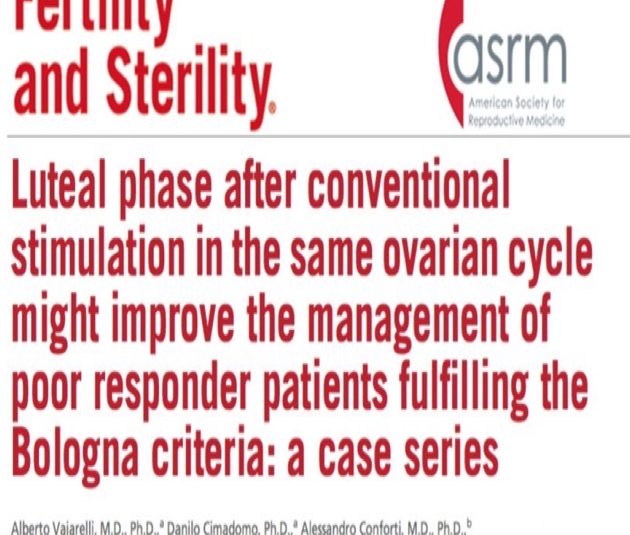
Luteal phase after conventional stimulation in the same ovarian cycle might improve the management of poor responder patients fulfilling the Bologna criteria: a case series
Alberto Vaiarelli, Danilo Cimadomo, Alessandro Conforti, Mauro Schimberni, Maddalena Giuliani, Pietro D’Alessandro, Silvia Colamaria, Carlo Alviggi, Laura Rienzi, and Filippo Maria Ubaldi
Fertility and Sterility 2019 Dec 11. pii: S0015-0282(19)32353-2. doi: 10.1016/j.fertnstert.2019.09.012
ABSTRACT
OBJECTIVE: To assess the clinical contribution of luteal-phase stimulation (LPS) to follicular-phase stimulation (FPS) in a single ovarian cycle (DuoStim) for poor responder patients fulfilling the Bologna criteria.
DESIGN: Observational study (years 2015-2017) including women satisfying ≥2 of the following characteristics: maternal age ≥40 years and/or ≤3 oocytes retrieved after previous conventional stimulation and/or reduced ovarian reserve (i.e., antral follicle count <7 follicles or antimüllerian hormone <1.1 ng/mL). The LPS was started regardless of the outcome of the FPS.
SETTING: Private in vitro fertilization center.
PATIENT(S): A total of 100 of 297 patients fulfilling the Bologna criteria chose to undergo DuoStim.
INTERVENTION(S): The FPS and LPS with the same antagonist protocol and agonist trigger, intracytoplasmic sperm injection with ejaculated sperm, preimplantation genetic testing for aneuploidies, and vitrified-warmed euploid single blastocyst transfer.
MAIN OUTCOME MEASURE(S): The contribution of LPS to the cumulative live birth rate (CLBR) per intention-to-treat (ITT).
RESULT(S): Patients (100) underwent FPS (maternal age, 42.1 ± 1.4 y; previous in vitro fertilization cycles with ≤3 collected oocytes, 0.7 ± 0.9; antral follicle count, 3.8 ± 1.2 follicles; and antimüllerian hormone, 0.56 ± 0.3 ng/mL). Ninety-one patients completed DuoStim. All patients were included in the analysis. More oocytes were obtained after LPS with similar developmental and chromosomal competence as paired FPS-derived ones. The CLBR per ITT increased from 7% after FPS to 15% after DuoStim. Conversely, the CLBR per ITT among the 197 patients that chose a conventional controlled ovarian stimulation strategy was 8%, as only 17 patients who were not pregnant returned for a second stimulation after the first attempt (drop-out rate, 81%).
CONCLUSION(S): The LPS-derived oocytes increased the CLBR per ITT in a single ovarian cycle in patients fulfilling the Bologna criteria. The DuoStim strategy is promising to manage this thorny population of patients, especially to avoid discontinuation after a first failed attempt.
KEYWORDS: Bologna criteria; DuoStim; double stimulation; luteal phase stimulation; poor responder